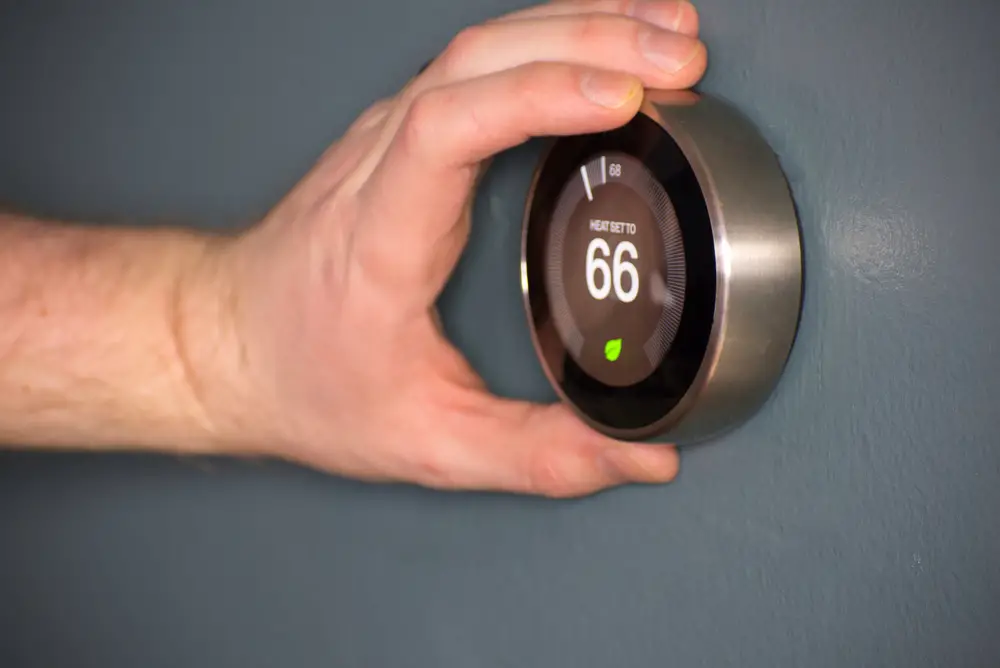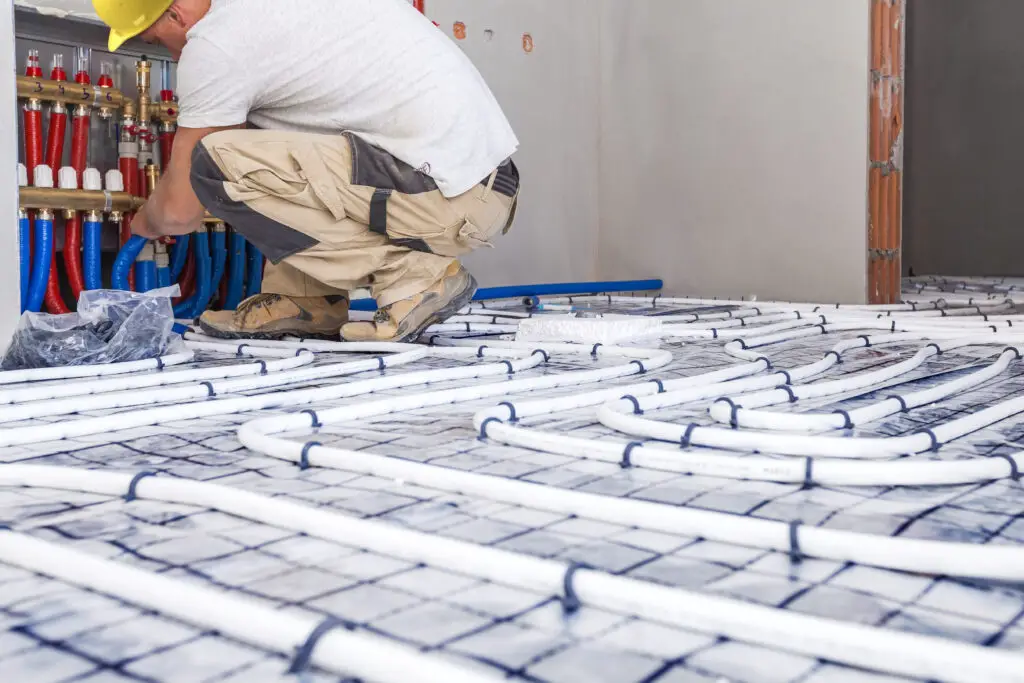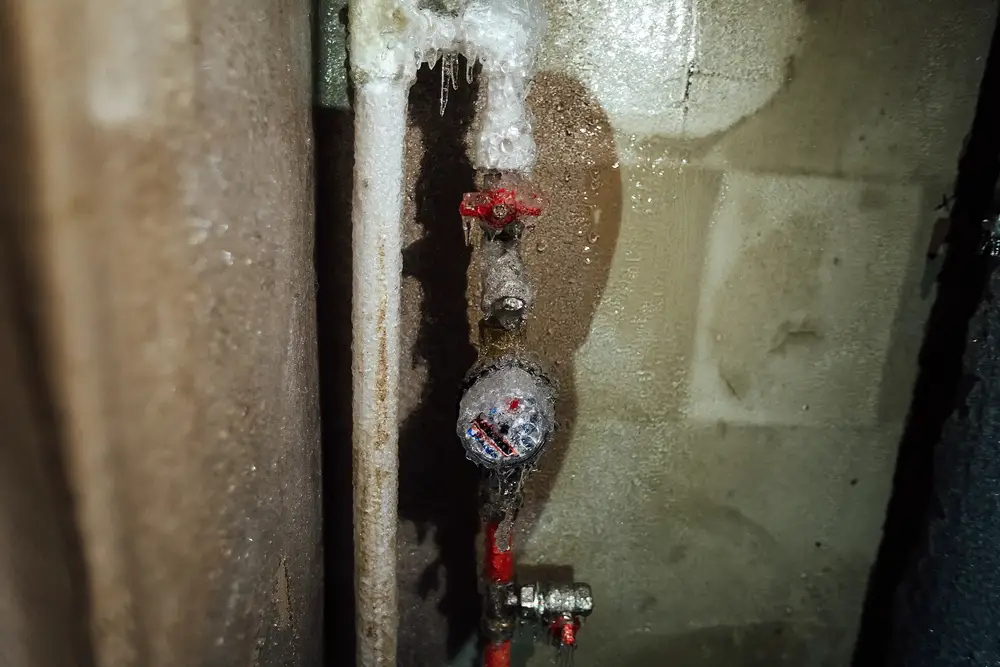An underfloor heating system is an electrical or water-based heating system installed underneath your floors. This technology is popular in part because it distributes heat evenly throughout the home. Using underfloor heating in summer requires specific considerations, as does underfloor heating use in winter.
Leave your underfloor heating system inactive during the summer months. To prevent the system from getting rusted through lack of use, turn it on a few times during the season.
During the winter, leave the system on at all times. Increase or reduce heating depending on the weather conditions, but do not completely turn the system off, because it takes about a couple of hours to warm up.

An electric underfloor heating system is cheaper than a water-based system and is more suitable for single-room heating, especially in bathrooms. A series of electric heating sheets of wires are installed beneath the flooring. The three main components of the system are heating mats, a thermostat, and insulation boards. For electric underfloor heating, there are three options: electric cable systems, loose-fit wiring, and heating mats.
A water-based underfloor heating system, in contrast, involves installing a series of pipes beneath the floors. The pipes carry hot water and keep the floor warm. The installation cost of a water-based system is higher than that of an electric system. However, a water-based system is cheaper to run. It takes some time to warm up but provides great comfort. And it can be installed under most types of floors, including tiles, stone, and wood. Both electric and water-based underfloor heating systems are suitable for homes.
Should you turn your underfloor heating off in the summer?
On average, around 50% of household energy bills in the UK go towards heating. And that makes homeowners look for ways to cut down their bills. Switching off heating systems during summer is one of the ways to cut down energy bills.
Electric mat and wire systems heat up faster than water-based systems. It also depends on the type of flooring. Tiles, vinyl, and stone flooring heat up pretty quickly while timber and carpet flooring take some time.
If you have a water-based underfloor heating system installed in your home, you will have to wait for a couple of hours for the floor to warm up sufficiently. Rather than increasing the temperature, wait a while.
Contrary to what some people tend to think, keeping an underfloor system always switched on at low temperatures is an efficient way to use the system. It does not cause any harm to the system. Do not frequently turn the system on/off because it will take longer to warm up and end up using more energy.
Most people do not need to turn on their underfloor heating systems over the summer months. But if you are living in a region that occasionally gets chilly even during summer, consider keeping the system on. Install a thermostat that automatically controls the temperature inside your home. That way you can avoid nasty surprises.

Why install underfloor heating in the summer months?
You may not think of installing an underfloor heating system in the summer months, but it is a good idea. If you wait until winter sets in and the floors get cold, you will have to deal with the cold floors for some time because the installation process is not quick.
Get it done during the summer and stop worrying about the chilly winter ahead. When temperatures drop, just turn the system on—unless you are still running it at a low level. If complications arise during the installation, the process will take even longer, and you may get stuck in the cold. While this may sound like the worst-case scenario, it could happen!
Professional installers are more likely to be available during the winter because most homeowners tend to get their heating systems installed or repaired as temperatures begin to drop.
Depending on the type of flooring you have, you may need an underfloor heating system year-round. Tile flooring, for example, gets pretty cold even in the summer months, and sometimes you may need to run the underfloor heating system.
Even if you do not need the heating system during summer, it is a good idea to get the system installed way before winter sets in.

Underfloor heating in winter – Key Considerations
In the depth of winter, leave your underfloor heating system on at all times. Adjust heating levels depending on usage. Completely turning an underfloor heating system is a bad idea because, as we have already stated, the system takes a couple of hours to warm up. And if a system runs round the clock, the long-term performance of the system does not suffer.
Consider investing in a smart thermostat because it will allow you to program the system with your mobile device, from anywhere. By keeping the system on at a reduced heat, you can significantly reduce your energy bills.
An underfloor heating system usually has a room thermostat with a frost setting that prevents the room temperature from dropping below 0° C. That means, as long as your underfloor heating is up and running, it is unlikely to freeze in the winter.
In the external pipes, however, water can freeze when it’s cold outside. This problem can lead to hard-to-repair drips, even split pipes. Insulating the pipes is a simple but effective way to prevent them from freezing. Anti-freeze can also be mixed with the water running through the pipes.
To prevent malfunctions from occurring in the first place, consider getting your underfloor heating system serviced once a year. Respond to an issue as it occurs, and you will not have to deal with a major issue.

Conclusion – Main Seasonal Considerations with Underfloor heating (water vs. electric in summer and winter)
An underfloor heating system can be expensive. However, by being a little bit strategic, you can reduce your energy bills. During summer, you can just switch off the system and make the best use of the warmth nature itself provides. Depending on your usage, taking the system out of “winter mode” can also be a viable option.
And during winter, feel free to leave the system on, nonstop, and adjust the heating level depending on the severity of the cold. Don’t worry about the long-term performance of the heating system, even if it runs round the clock. It will be just fine.
But what type of underfloor heating system should you choose? As we have already stated, both electric (dry) and water-based (wet) systems are suitable for homes. Nevertheless, when making a decision, the factors you may take into consideration include the type of floor you have, and the cost involved.
Installing a wet underfloor heating system is more expensive than a dry system. But a wet system is less expensive in the long run because it has a low running cost. If your home requires some heating during the summer months, you will have to keep the system running almost constantly, and a wet system is more suitable for that purpose.
While an electric system is more suitable for heating bathrooms and other small rooms, a water-based system is more suitable for heating large spaces.
The key is to make an informed decision. Learn as much as possible about underfloor heating systems before you get one installed in your home. If you feel you are not adequately informed, get in touch with a reliable professional and discuss your specific requirements.
Lots more Underfloor Heating Information Here
- What Depth is Required for Underfloor Heating?
- Turning on Underfloor Heating for the First Time – How Long to Wait?
- Can you lay Vinyl flooring over underfloor heating?
- Do Tiles Crack With Underfloor Heating?
- Can You Heat a Whole House With Underfloor Heating?
- Can You Have Underfloor Heating Upstairs?
- Will Underfloor Heating Raise My Floor? – Underfloor Heating Layers Explained
- Can I put furniture on top of underfloor heating?
- How Do I Know If My Underfloor Heating is Leaking?
- Can You Combine Underfloor Heating With a Ground Source Heat Pump?
- Is Underfloor Heating Safe?
- Does Underfloor Heating Add Value to a Property?
- Can you have Wooden Floors with Underfloor Heating?
- Can Underfloor Heating Cause a Fire?
- What temperature should Underfloor Heating be set at?
- Can I Put a Rug Over Underfloor Heating?
- How Long Does it Take for Underfloor Heating to Warm Up?
- Why is my Underfloor Heating Noisy?
- Why is my Underfloor Heating Patchy?
- How do I know if My Underfloor Heating is Working? – Common Problems & Fixes
- What can go wrong with underfloor heating?
- Can you Combine Underfloor Heating with an Air Source Heat Pump?
- Do you keep underfloor heating on all the time?
- Does Underfloor Heating work with Smart Thermostats?
- Kitchen Underfloor Heating – Should Underfloor Heating go Under Kitchen Units?
- How much energy does Underfloor Heating use?
- Underfloor Heating in Summer and Winter
- Lifespan of Underfloor Heating
